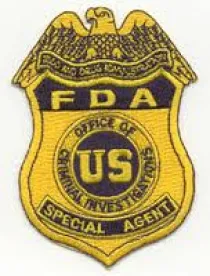Defendant U.S. Food and Drug Administration (FDA) and the Right to Be Smoke-Free Coalition (RSF) recently submitted briefs to the federal district court of Maryland opposing a motion for summary judgment filed by various public health NGOs in American Academy of Pediatrics v. FDA.[1]The NGOs are challenging various extensions to premarket application compliance deadlines for deemed tobacco products that were announced as part of FDA’s new comprehensive tobacco and nicotine regulatory plan, and finalized in its August 2017 Guidance Document, Extension of Certain Tobacco Product Compliance Deadlines Related to the Final Deeming Rule (the “Guidance”). This includes the August 8, 2022 compliance deadline for filing vapor product Premarket Tobacco Applications (PMTAs), which was extended from the original August 8, 2018 cutoff for products on the market on August 8, 2016, as initially set forth in the Deeming Rule. RSF is not a party to the lawsuit, but filed an amicus (or “friend of the court”) brief defending the compliance period so that vapor product manufacturers have adequate time to prepare compliant applications. We provide background on the case and the NGOs’ opening positions in our August 2, 2018 post, and highlight below key points from FDA’s and RSF’s briefs.
FDA Argues that the Court Lacks Jurisdiction to Hear the Case or, In the Alternative, the NGOs’ Motion for Summary Judgment Fails on the Merits
In its opposition brief (available here), FDA begins by arguing that the Court does not have jurisdiction to even hear the dispute.
First, FDA maintains that the NGOs lack “standing” – i.e., that the NGOs do not have a sufficient connection to the PMTA issue to bring the lawsuit.[2] In essence, FDA claims that the NGOs will not suffer a concrete and redressable injury if the August 8, 2022 compliance date is upheld. The NGOs complain that if PMTAs are not filed until that date then they will not be able to educate the public in the near-term about information that would otherwise be contained in the PMTAs. But as FDA points out, this argument was soundly rejected by another federal court in Cigar Ass’n of Am. v. FDA after the NGOs tried to intervene in that lawsuit challenging aspects of the Deeming Rule filed by the cigar industry.[3] In that case, it was not enough for the NGOs – who are not subject to the PMTA requirements themselves – to rely on generalized and speculative allegations that it might somehow be more difficult or costly to disseminate information to the public in the absence of PMTAs. According to FDA, the same holds true here. Moreover, FDA argues that the NGOs fail to cite any authority that gives them a legal right to the type of information, whether now or at a later date, contained in a PMTA.
Second, FDA claims that the Court lacks jurisdiction because the agency was simply exercising its enforcement discretion not to require PMTAs for a specified period of time, the type of decision that typically is not subject to review by federal courts. Not only is the revised compliance period limited in duration, it is also part of a broader comprehensive policy to address tobacco-related issues and ensure that high-quality applications are filed, which will include upcoming efforts by FDA to further delineate through guidance and rulemaking what information must be included in PMTAs. For support, the agency cites to Supreme Court case law that reserves to agencies the discretion to prioritize their activities, allocate resources, and adopt overall policies – including those involving enforcement – in the absence of statutory mandates to the contrary.[4] FDA concludes that the Tobacco Control Act (TCA)[5] does not prohibit the agency from establishing reasonable compliance deadlines.
Finally, the agency relies on long-standing law that guidance documents are typically not subject to review by federal courts under the Administrative Procedure Act (APA).[6] Unlike a formal rule, guidance does not impose obligations on the agency or legal duties on regulated entities; rather, guidance only represents an agency’s current thinking, which in this case is that FDA does not intend to enforce the PMTA requirements until August 8, 2022 for products that were already on the market when the Deeming Rule went into effect on August 8, 2016. In other words, the Guidance does not have the finality of a regulation – it merely summarizes FDA’s exercise of discretion – that would lend itself to judicial review.
FDA further maintains that, even if the Court has jurisdiction to hear the case, the NGOs’ motion should be denied on the merits. The agency first argues that the Guidance does not conflict with the TCA’s PMTA provisions[7] because it does not modify any statutory requirements.[8] Manufacturers are still required to submit PMTAs. The Guidance merely describes FDA’s intention not to enforce the PMTA requirements for a limited period of time, which is a discretionary determination reserved to the agency. In fact, FDA notes that the NGOs submitted comments during the rulemaking acknowledging that the agency has discretion to establish a compliance period for new tobacco products. Moreover, FDA points to more practical reasons for setting an August 8, 2022 filing deadline, all of which are consistent with the TCA, including the agency’s need to more efficiently manage those PMTAs that are eventually filed and to ensure high-quality submissions.
Second, FDA rebuts the NGOs’ claim that the agency, before it extended the compliance period, failed under the APA to provide notice to the public, and solicit and accept comments on the Guidance.[9] Underpinning the NGOs’ argument, however, is the premise that the Guidance is a formal rule and thus subject to the APA’s notice and comment requirements. But a rule has the force of law and imposes legal rights and obligations, which contrasts with a guidance document that merely advises the public on how the agency intends to assert its discretionary power.[10] As FDA points out, the Guidance does nothing more than simply indicate when it will exercise its enforcement discretion as to the filing of premarket applications for deemed tobacco products.
Finally, FDA maintains that it sufficiently justified the extension, contrary to the NGOs’ claims. Under the APA, agencies must explain their actions and engage in reasoned decision-making.[11] In support, FDA explicitly cited to arguments made by RSF in Nicopure, et al. v. FDA – that the original August 8, 2018 deadline was not sufficient and that the judge in that case indicated that other filing deadlines may have been reasonable.[12] The agency then noted that the new compliance period is part of an overarching comprehensive plan to regulate nicotine and tobacco, and that the extension will allow the agency to provide further direction to industry through guidance and rulemaking on how the PMTA process will work.[13] As characterized by the agency, the plan is intended “to make certain that the FDA is striking an appropriate balance between regulation and encouraging the development of innovative tobacco products that may be less dangerous than cigarettes,” such as vapor products.[14]
RSF Argues that the Original PMTA Deadlines in the Deeming Rule Were Unattainable and that Vacating the Guidance Would Virtually Ban the Industry and Deprive the Public of the Health Benefits Provided by Vapor Products
To provide the vapor industry perspective, RSF filed an amicus brief in support of the extended compliance deadline (available here). RSF makes two arguments in favor of the new PMTA filing date: (1) that no vapor company could have met the initial two-year deadline because industry would not have had sufficient time to complete the burdensome applications, including the long-term, product-specific clinical/epidemiological studies that FDA will likely require; and (2) that the two-year deadline, were it reinstated by setting aside the Guidance and granting the NGOs’ motion, would effectively ban vapor products, which provide an important public health benefit to transitioning smokers.
Vapor product manufacturers could not have met the original August 8, 2018 deadline because of the tremendous expectations set forth by FDA in its 2016 draft guidance for PMTA submissions for Electronic Nicotine Delivery Systems (PMTA draft guidance).[15] Among other things, the PMTA draft guidance states that:
- Manufacturers should file a separate PMTA for each “finished tobacco product”;
- Components should be tested for each device in which they could reasonably be used;
- The relative health risks of each new e-liquid or device should be compared to the anticipated risks of other tobacco products on the market;
- Literature relevant to each product should be thoroughly reviewed and the findings included in any PMTA submission; and
- Manufacturers should test each product for a broad range of characteristics, including chemical identity, constituent composition, aerosol emissions under a range of operating conditions, toxicological and pharmacological profiles, storage and stability profiles, environmental effects, and use patterns at different nicotine levels.
The most significant concern, however, is that under the PMTA draft guidance manufacturers will likely be expected to conduct exceedingly expensive and long-term clinical/epidemiological studies. In its brief, RSF presents publicly available evidence from long-term studies recently funded by the federal government showing that this type of research, on average, takes at least two years, and in many circumstances far longer. In fact, RSF points out that FDA’s own long-term epidemiological study (called the Population Assessment of Tobacco and Health or “PATH” study) on tobacco products, including e-liquids and devices, has already taken seven years and is still on-going. As such, it was completely unrealistic for FDA to expect that industry would have been able to file compliant applications by the original August 2018 deadline[16] and, as a consequence, the vast majority of manufacturers would have had to leave the marketplace after that compliance period expired.
In its brief, RSF also notes that such a large-scale market exit could have a significant adverse impact on the public health. RSF demonstrates, in particular, that having access to a large variety of products and e-liquid flavors is often a key component in any individual’s attempt to switch away from cigarettes and transition to less risky vapor products. As Julie T. Woessner, National Policy Director for the Consumer Advocates for Smoke-free Alternatives Association (CASAA), explains in an accompanying affidavit filed with the court, “a significant number of our members use more than one flavor or brand of e-liquid . . . we find those making a complete transition from smoking to vaping most often report that finding a non-tobacco flavor was instrumental in helping them distance themselves from their smoking habit, and sampling a variety of different flavors actually served to make vaping more enjoyable than smoking.”
Ms. Woessner then articulates the public health benefit that could be lost: “[I]f consumers do not have access to these products, there is a substantial risk that they will return to their old smoking habits or feel forced to rely on do-it-yourself (“DIY”) activities or an unregulated black market for e-liquids and devices. This is not merely a theoretical concern. . . [w]hen asked what they would do in response to a total ban on all vapor products – the entire product category – 93% of the CASAA [Member] Survey respondents indicated that they would continue to use the products they enjoy by either purchasing them from overseas or a domestic black market, or by engaging in DIY activities.”
We will continue to monitor the progress of this lawsuit and will provide a summary of the court’s decision on the NGOs’ motion for summary judgment.
_________________________________________
[1] Case No. 8:18-cv-00883 (D. Md.) It bears noting that an amicus brief in support of Plaintiff NGOs was filed on July 17, 2018 on behalf of the American Thoracic Society and other public health organizations. The brief, which is available here, addresses the health effects of all products newly-deemed by the Deeming Rule, including combustible tobacco products, like cigars. The brief does not address legal arguments in the case, nor does it address the potential public health benefits of newly available, non-combustible products for longtime smokers.
[2] See, e.g., Lujan v. Defenders of Wildlife, 504 U.S. 555, 560 (1992).
[3] Cigar Ass’n of America v. FDA, 323 F.R.D. 54 (D.D.C 2017).
[4] Heckler v. Chaney, 480 U.S. 821 (1985).
[5] 21 U.S.C. §§ 387 et seq.
[6] Bennett v. Spear, 520 U.S. 154, 177–79 (1997); Am. Tort Reform Ass’n v. Occupational Safety & Health Admin., 738 F.3d 387, 395 (D.C. Cir. 2013).
[7] 21 U.S.C. §§ 387j(a)(2), (c)(1)(A)(i).
[8] As detailed in the Nicopure v. FDA litigation (Case No. 17-5196) (D.C. Cir.), RSF maintains that FDA had a statutory obligation to tailor the PMTA process to less risky vapor products and allow the vapor industry to submit PMTAs that do not include product-specific long-term clinical/epidemiological studies; instead, industry could rely on an existing scientific literature review showing that vapor products present substantially less risk than cigarettes on the whole and are thus appropriate for the public health. Indeed, Congress gave FDA such authority within the PMTA provision itself, only requiring clinical studies “when appropriate” and permitting use of other “valid scientific evidence.” 21 U.S.C. § 387j(c)(5). Unfortunately, FDA rejected this approach during the rulemaking. See 81 Fed. Reg. at 28,997.
[9] 5 U.S.C. § 551 et seq.; 5 U.S.C. § 553.
[10] See Bennett, 520 U.S. at 178.
[11] FCC v. Fox Television Stations, Inc., 556 U.S. 502, 515 (2009).
[12] Nicopure Labs, LLC v. FDA, 266 F. Supp. 3d 360, 399–400 (D.D.C. 2017). That case is now on appeal before the U.S. Court of Appeals for the District of Columbia Circuit, with oral arguments scheduled for September 11, 2018. See Update on Deeming Rule Appeal available here.
[13] FDA News Release, “Protecting American Families: Comprehensive Approach to Nicotine and Tobacco,” https://www.fda.gov/NewsEvents/Speeches/ucm569024.htm (July 18, 2017) (last accessed: 08/21/18).
[14] Id.
[15] FDA, Premarket Tobacco Product Applications for Electronic Nicotine Delivery Systems: Guidance for Industry (Draft Guidance) (May 2016).
[16] Indeed, as summarized previously on this blog here, on August 2, 2018, just before the initial PMTA deadline would have expired, FDA announced it would soon be issuing additional guidance, holding a public hearing and begin a new rulemaking regarding the PMTA process. See FDA, Advancing Tobacco Regulation to Protect Children and Families: Updates and New Initiatives, https://tinyurl.com/y8wked2z. As such, it is not clear how manufacturers would have been able to submit complete applications by the original cutoff if FDA itself is still in the process of finalizing the PMTA framework.





 />i
/>i
